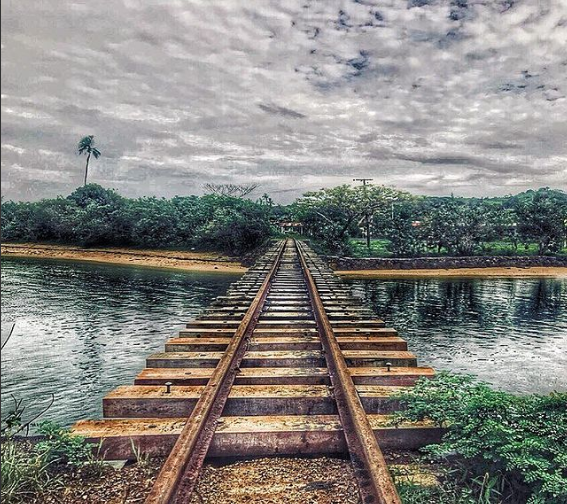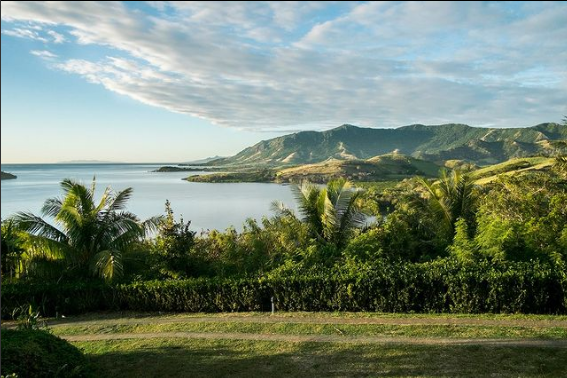Where Does Fiji Water Come From Really? Viti Levu Island, Fiji, is Fiji’s source of purified water. To acquire a piece of the multi-billion dollar bottled water market, several companies worldwide produce bottled water. One of the various water brands on the market is Fiji Water that comes in 1.5-litre, 1-litre, 700-ml, 500-ml, and 330-ml bottles. It is packed and transported directly from the Fiji Islands. A natural aquifer in Viti Levu, Fiji, provides the water with a pH concentration of 7.3 and 7.7.
About Fiji-Where Does Fiji Water Come From Really?
About 332 islands and 522 islets make up the Republic of Fiji, an island nation. New Zealand and Hawaii are on each side of this archipelago in the South Pacific. The main two islands, Viti Levu and Vanua Levu, are both permanently populated. Viti Levu, Fiji’s largest island, encompasses 10,388 square kilometers (4,011 square miles), or 57% of the country’s total land area. In addition, it is home to 69 percent of the country’s population and the capital city of Suva. The southeastern half of the island receives up to 304 cm or 120 inches of rain, resulting in a lush tropical forest. Because of the rugged terrain, the island is home to a plethora of rivers.
History-Where Does Fiji Water Come From Really?
David Gilmour, a Canadian businessman, established Natural Waters of Viti in 1996, which later became Fiji Water. When Roll Global purchased the firm in 2004, it changed its name to The Wonderful Company. When Fiji Water’s global sales peaked at $85 million in 2009, the company had made a sizable profit from its initial investment. Fiji Water extended its activities in 2010 by acquiring Justin Vineyards and Winery to boost their brand further and distribute it to a variety of other businesses. Bordeaux and Syrah are two of the most well-known wine brands created in California and sold worldwide.
In Fiji, There have Been Several Disputes-Where Does Fiji Water Come From Really?

Since Fiji Water is controlled by a foreign firm that relies on local resources, it has had its fair share of disputes with the local government. Impounding shipments of water destined for export was the beginning of the problems in 2007 when the Fijian government proposed raising the tariff on water export from 10 cents to 20 cents each bottle. The government canceled the proposed tax increases. David Roth, an external affairs director, was deported by the Fiji government in 2010 for allegedly interfering in the nation’s affairs. Following an increase in the tax to 15 cents per bottle, the firm shut down its operations in Puerto Rico. Threats from Fiji prevented the corporation from moving to New Zealand, as they threatened to hand over the aquifers. The corporation accepted the new tax as a result of this decision.
In the Marketplace-Where Does Fiji Water Come From Really?
Water is something that we need to survive.
Humans can only leave three days without water before dying. It is amongst our most vital needs, but it can be tough to find in some parts of the world. It has led people to create machines and processes so they might access water in places where it’s scarce or nonexistent.
The process for Fiji Water starts much like any other brand-name bottled water: at a well. But not just any well: an artesian aquifer located hundreds of feet below the ground under the rainforest on the second largest island in Fiji, Viti Levu
With dozens of water brands on the market, Fiji Water is doing well on a worldwide scale. Fiji Water makes $150 million a year from the $15 billion bottled water sector in the United States. Fiji water is ranked 8th in the U.S.market behind Dasani, Niagara, and Aquafina, having a sizable following. About 1,000 people work at Fiji Water, which has its corporate headquarters in Los Angeles. Fiji Water is currently raising $350 million in sales worldwide and shipping the water to every continent. Presently three co-owners of The Wonderful Company (Fiji Water): Lynda Resnick, her husband Stewart Resnick, and the third co-owner.
The Production Process-Where Does Fiji Water Come From Really?
The water flows from the aquifer to the surface (without a pump) purified using reverse osmosis. Reverse osmosis involves:
- Pumping water at high pressure through a semi-permeable membrane.
- Removing the contaminants.
- Leaving the natural minerals intact for flavor.
Then, they add trace minerals back to get it just right to taste good while also being good for you. Finally, they bottle it in an oxygen barrier bag rather than plastic to keep it fresh while allowing carbon dioxide to escape without letting oxygen in. It makes Fiji Water taste much better than water stored in regular plastic bottles because it keeps out other chemicals often found in plastic.
Fiji Water is the only brand of water sold in a bag, which you can see as a novelty or a sign that it’s better than the rest. Either way, you look at it, Fiji Water has been ranked number one by American consumers multiple times and is now available worldwide.
In Fiji
Fijian water bottlers went through a self-imposed industry-wide closure in 2007–2008 due to legal issues, impounded shipments, and a self-imposed industry-wide shutdown. The planned 20-cent per liter levy was later scrapped by the administration. Fiji Water had to lay off 40% of its workforce in December 2008 due to declining sales.
Fiji Water head of external relations David Roth got deported in November 2010 for “interfering in Fiji’s internal affairs,” which led to the resignation of Ratu Epeli Ganilau, the temporary defense and immigration minister.
Shortly after that, on November 29, 2010, the firm closed its Fiji Island headquarters due to an increase in tax from one-third of a Fiji cent per liter to 15 cents per liter for producers above 15 million liters per month. Fiji Water’s tax payment to the Fiji Government increased from F$500,000 to F$22.6 million due to the company’s tax rate.
The brand’s next logical step was to relocate to New Zealand. On the other hand, Fiji Water stated its intention to continue operations and accept the increased tax fee amid threats from the government to transfer the well to another firm.
Fiji water’s facility employed 400 people as of December 2010. To help remote villages in Fiji, where 50% of residents lack access to clean water, the corporation formed a foundation to provide water filters. As of 2019, it has fallen to 12%.
What makes Fiji Water special?-Where Does Fiji Water Come From Really?
Water. It’s essential to our continuance as a species. Some might even say that water is the elixir of life. Without water, we would all die, and nobody would be reading this article because all written works would rot away and disappear. But I don’t need to lecture you about how important clean, fresh drinking water is; we can both agree that it’s pretty much right up there with oxygen and food as one of those critical things without which we cannot survive as living organisms.
So what does Fiji Water have to do with anything? What could make this bottle of apparently very pure unadulterated H2O from the South Pacific so special? Why should you spring for the extra five bucks to buy it rather than just treating yourself to a Costco pack of Poland Springs instead?
Simple. Because people are willing to spend more money on water that doesn’t come from their kitchen sink.
What makes this specific brand of bottled H2O stand out from its competitors in the ever-growing market for designer water?
The answer to that question lies in the way the product is harvested and produced. Fiji Water comes from an ancient underwater aquifer on one of the islands in Fiji, which is protected by natural springs, shielded from pollutants by active volcanoes, and within stringent guidelines for harvesting, bottling, shipping, and selling the water. Few other brands can make this same claim; Fiji Water is unique in the world because of its many distinctions and perfection of the art form when it comes to distributing their product.
The natural aquifer where the water for Fiji Water is sourced was unharmed by atomic testing, so its purity has remained untouched for millennia. However, some living organisms are still in the well itself due to its protected environment within active volcanoes. The company brings that water up into surface rigs and then transports it via boat to modern bottling plants before selling it to consumers across the country.
Harvesting of Fiji Water
“But if it comes from an ancient underwater source, why doesn’t it have saltwater properties?” you might ask. To answer that question, I’ll let the company’s website do the talking:
Fiji Water is harvested from an artesian aquifer located beneath the Yaqara Valley in Viti Levu, the main island of the Fiji archipelago. The aquifer contains a mixture of minerals and water that has been under pressure for many thousands of years. As this ancient water rises to meet the surface, it is naturally filtered through porous coral rock, providing one of nature’s finest purified drinking waters.
During harvesting, we only take water from the top portion of this massive underground body of water so as not to disturb its sensitive balance. This natural filtration by the earth provides another critical benefit: while some bottled waters add calcium or magnesium for taste, the minerals in Fiji Water are entirely natural.
The unique process of slow artesian flow also means that pressure forces more oxygen into the water, creating tiny bubbles that stay suspended longer and provide a crisp, refreshing feel. It is not to be confused with carbonated waters, which have more giant bubbles due to higher carbon dioxide content.”
Why Fiji is Different-Where Does Fiji Water Come From Really?
That’s some pretty impressive information there, but it still leaves one question unanswered: if this is such a fantastic product, why has no one else ever tried something like this before? If bottling water from ancient underground springs provides such an obvious benefit without any drawbacks or inherent risks involved, why haven’t other companies followed suit and begun producing their versions of the magical elixir?
To answer that inquiry, we have to look at the ingredients in Fiji Water. While natural spring water is a part of this formula, there are specific requirements for harvesting and bottling to be considered a viable product in its market. The container must be 100% recyclable and BPA-free. It is sealed with a non-toxic resin cap rather than a metal lid or corked, which can alter the taste of the water itself due to chemical interactions between the two materials. No artificial flavors or colors may be present during processing or anything from genetically modified organisms used to culture or grow ingredients from start to finish.
So why haven’t other companies caught on yet? Fiji Water has been on the market for over a decade, and it wasn’t until recently that anyone else took notice of their patent-pending product. Perhaps some don’t even know about the secret source of Fiji Water, or maybe they are not desiring to go through the trouble of complying with all those demands to make a product people will buy. Whatever the cause, it is obvious Fiji Water won’t be going anywhere anytime soon.
Conclusion
With only 20% of the water on earth being fresh and two-thirds of that amount locked up in glaciers and ice caps, it leaves less than 1% available at any given time as freshwater supplies. Many countries have already begun experiencing severe shortages leading to droughts, damaged ecosystems, and irregular weather patterns. With the looming threat of water wars, we all must take proactive steps to conserve this valuable resource as much as possible until the day when everyone has access to clean drinking water.
What can you do? First, use less power by turning off lights and appliances when they’re not in use; turn your thermostat down on hot days or upon cold ones; don’t leave electronics plugged in if you’re not using them; only run your dishwasher or washing machine with a full load, etc. Second, drink tap water instead of bottled water if that is an option for you. And third, do what you can to advocate for sustainable practices wherever possible so future generations can enjoy the same earth we’ve been given.
Recommended Reads
- Castles in Czech Republic-Top 50
- Best Place to Live for Climate Change-Top 25
- How Earthquakes are Formed-Earthquakes and Global Warming-Is There a Connection?
- Climate Variability and Climate Change- What is the Difference?
- Best Place to Travel to in March 2022-Top 20
- Best Place to Travel to in January 2022-Top 20
- Ecuador for Retirement: All You Need to Know for 2022


